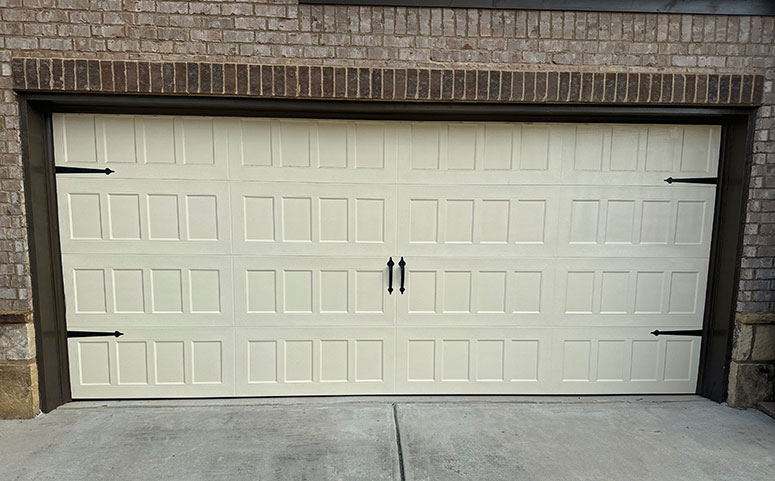Common Garage Door Troubles and Exactly How to Deal with Them
Garage doors are necessary for both safety and security and convenience, yet they often present a variety of typical concerns that can frustrate house owners. While some issues might appear uncomplicated to resolve, others might require a much more nuanced understanding of garage door mechanics.
Noisy Garage Door Procedure
A loud garage door operation can be a substantial source of inconvenience for home owners, usually indicating underlying mechanical issues. Such disturbances might stem from numerous causes, including worn-out rollers, loose equipment, or inadequate lubrication. Determining the resource of the noise is critical for effective resolution.
Over time, these components can weaken, leading to grinding or squeaking noises as the door steps. Additionally, loosened screws or screws in the door device can create rattling audios throughout operation.
Another contributing variable is insufficient lubrication of the door's moving components. Using a top notch lube to the tracks, springs, and rollers can greatly reduce friction and noise. Property owners ought to perform this upkeep occasionally to keep optimal performance.
Finally, the garage door opener might also create sound because of its age or mechanical issues. If the noise persists regardless of resolving various other elements, speaking with a professional for an extensive examination and possible repair work might be essential.
Door Will Not Open or Close
Experiencing a garage door that won't open or shut can be unbelievably aggravating and frequently signals a breakdown within the system. Several aspects can add to this issue, and determining the origin is vital for effective resolution.

Following, inspect the safety sensing units situated at the base of the door. These sensors can become misaligned or obstructed by debris, stopping the door from running correctly. Tidy the sensors with a soft cloth and ensure they are aligned.
Furthermore, the garage door's interior elements ought to be assessed. Problems such as a busted spring, damaged rollers, or a harmed opener can restrain activity. If any kind of elements seem harmed, it may be recommended to speak with a specialist for fixings.
Misaligned Tracks
To determine misalignment, visually examine the tracks for spaces or uneven spacing. If you notice any kind of inconsistencies, it is important to resolve the issue promptly - garage door service. Begin by loosening the screws that protect the track to the wall, permitting for modifications. Carefully touch the track back into its correct setting using a rubber club or a similar tool, ensuring it is straight and degree.
When the placement is remedied, retighten the screws to secure the track. For a more permanent solution, think about reinforcing the tracks with additional brackets. Normal maintenance, consisting of cleaning the tracks and making certain rollers are in great condition, can prevent future misalignments. By resolving misaligned tracks immediately, you can bring back the functionality of your garage door and boost its longevity.
Broken Springs
Amongst the different elements of a garage door system, broken springs are one of one of the most common concerns that can dramatically restrain its performance. Garage door springs are critical for stabilizing the weight of the door, enabling smooth opening and closing. When a spring breaks, it can bring about a door that is hard to operate or, in many cases, completely unusable.
There are 2 main sorts of springtimes: torsion springtimes, which are mounted above the door, and expansion springs, located on either side. Indications of a busted springtime include a door that won't open up, a noticeable void in the spring, or a loud noise during procedure. Attempting to run a garage door with a damaged springtime can trigger additional damage to the door or the opener.
Repairing busted springs is not a do it yourself job; it calls for specialized tools and competence due to the high tension involved. It is suggested to consult a professional technician that can safely replace the springs and make certain the door is properly balanced. Routine maintenance and examinations can help avoid spring failings and expand the lifespan of the garage door system.
Remote Control Issues

If the remote still falls short to operate, inspect the garage door opener to ensure that its sensors are browse around this site tidy and unblocked. Dirt, particles, or misalignment may prevent the signal transmission between the remote and the opener.
Interference from other digital gadgets can additionally hinder remote functionality. Make sure that neighboring devices, such as wireless routers or cordless phones, are not triggering disruptions. garage door service. If interference is believed, try relocating these gadgets better far from the garage door opener
In some situations, the remote may need to be reprogrammed. Seek advice from the manufacturer's guidelines to reset the push-button control and integrate it with the garage door opener. If all else stops working and the remote continues to malfunction, take into consideration speaking with a professional service technician for a detailed assessment and possible replacement of the remote or opener.
Final Thought
Comments on “Garage Door Service Experts Offering Reliable Maintenance Solutions”